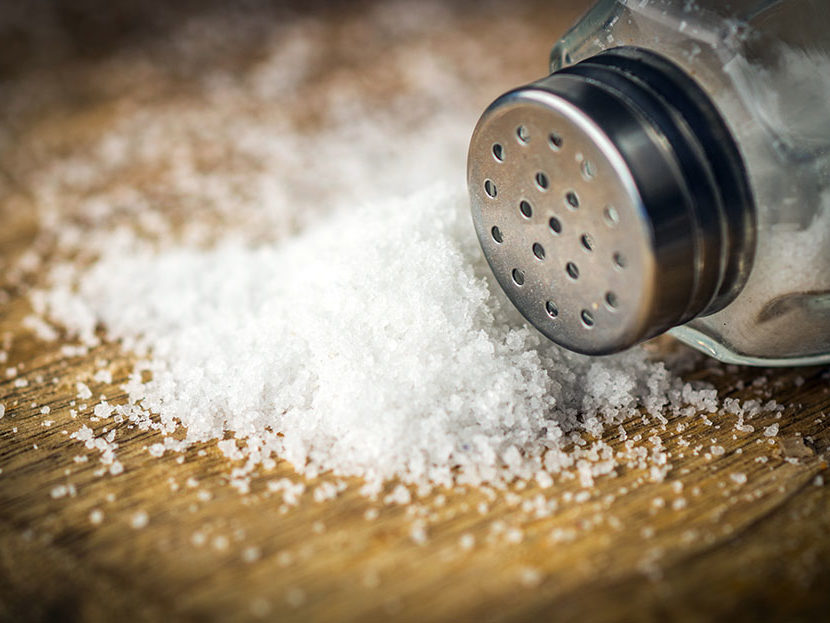
Maybe not everyone knows this but the use of added salt in human nutrition is a relatively recent habit. Originally, the only source of salt for humans came from that which naturally occurred in food, which amounted to no more than 1 gramme per day!
5 grammes of salt — equivalent to roughly 2 g of sodium — is what the World Health Organization currently recommends as the maximum daily intake as part of its efforts to prevent the occurrence of a range of diseases which in recent years have been shown to be linked to excessive use of salt in nutrition. These include arterial hypertension (the cause of diseases affecting the cardio and cerebrovascular systems, formation of kidney stones, osteoporosis, hydrosaline retention and certain types of cancer.
In order to understand the extent of the problem, in Italy the consumption of salt in the adult population is on average about twice recommended levels and is higher in the south than in the northern and central areas of the country.
So, if casual consumption increases the risk of stroke and heart-attack, then informed and measured consumption reduces blood pressure, improves the function of the heart, kidneys and blood vessels, and increases bone strength.
To reverse this consumption trend, WHO is mainly focusing on the food industry sector: 64% of daily intake comes from food products on the market (bakery products, cold cuts, bread, cheese) or from that which is naturally present in food. Be careful with seasonings and curb the amount of salt used in home cooking, which, though of paramount importance, accounts for only 36% of daily salt consumption.
Some data to give a more complete picture of the main sources of sodium in the diet:
- It is found in its natural state in foods (water, fruits, vegetables, meat, etc.) (about 10%).
- Salt added in home cooking, commercial cooking or at meals as a seasoning (about 36%).
- In industrially processed or artisanal products (about 54%).
- Most of the intake of dietary sodium comes from processed food and consumption outside the home (up to 75%) compared with only 10% in home cooking.
In processed food, salt is mainly used as a flavour enhancer and the main reason for that is to meet taste and processing requirements.
In order to achieve decisive results in terms of well-being and to raise consumer awareness of the problem of excess salt in daily nutrition, the WHO is focused chiefly on the food industry. The appeal — also supported by the Italian Ministry of Health — is to reduce the salt content in processed products.
To achieve this goal, all stakeholders involved in the consumers’ lifestyles must become ambassadors and promote a reduction in salt consumption and its use in food products: from health professionals to governmental organizations (Italy’s Istituto Superiore di Sanità) and non-governmental (SINU — Italian Society of Human Nutrition), including public catering organizations, large and small companies, and, in general, the entire agri-food supply chain, and also Italian regional authorities. Only in this way can we achieve a substantial improvement in consumer health and make healthy food choices easier.
Things have already started to move: at Expo Milano 2015 a protocol was signed on “Shared objectives for the improvement of nutritional characteristics of food products with particular attention to the child population (3-12 years)” in which the food industry has committed itself to changing the amounts of simple sugars, salt and saturated fats added to food production and offering more transparent information on labelling.
While waiting for the appeal to be accepted by everyone and for the commitment to be embraced by the entire food supply chain, there are some precautions that consumers can take individually to start reducing the risk of excess salt in their diet:
- Use only a small amount of salt when cooking by using a teaspoon to measure it out rather than doing it by hand;
- Replace salt with herbs and spices to add taste and flavour to each dish;
- Season with lemon juice and/or vinegar to halve the doses of added salt;
- Read processed products’ labelling carefully and pay attention to the amount of salt contained in them;
- Avoid the use of stock cubes, preserves and processed sauces.
Eating habits are hard to change, but starting with a few useful tricks is an important first step in learning how to reduce the amount of daily salt intake and live a healthier life.
Sources and insights:
https://www.who.int/en/news-room/fact-sheets/detail/salt-reduction
http://www.salute.gov.it/portale/temi/p2_6.jsp?lingua=italiano&id=4950&area=stiliVita&menu=vuoto